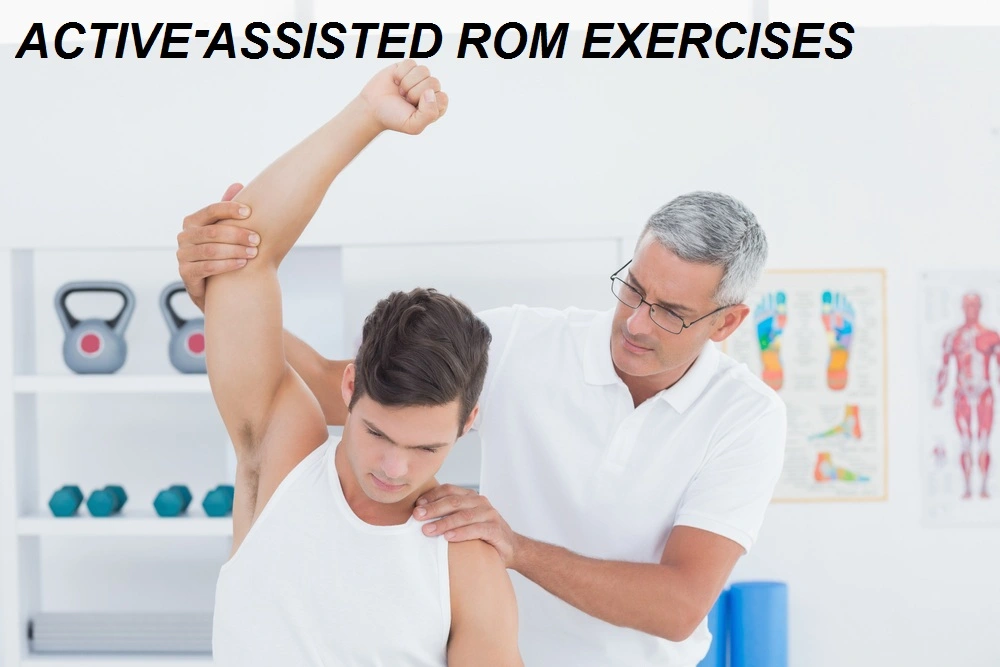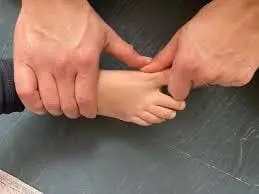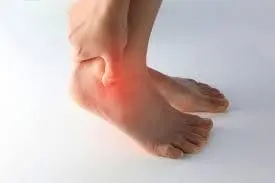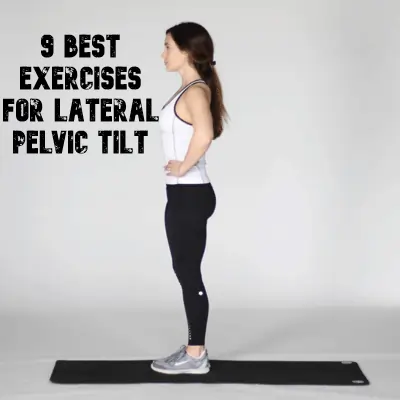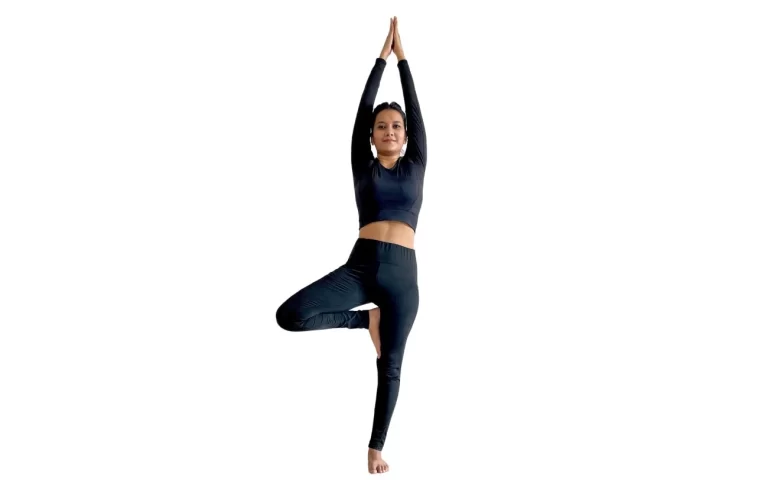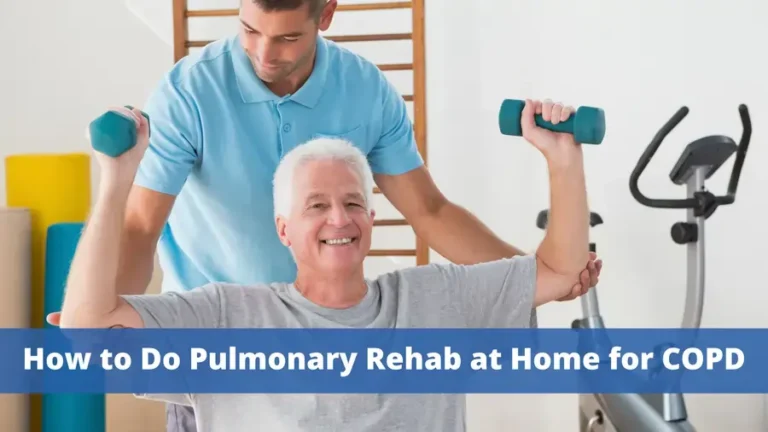Active Assisted Range of Motion Exercises (A-AROM)
Introduction
Therapeutic activities known as Active Assisted Range of Motion (A-AROM) are designed to improve joint flexibility, muscle strength, and joint mobility. These exercises are commonly utilized in physical therapy and rehabilitation settings to assist individuals who may have limited mobility or are recovering from medical procedures or illnesses.
Unlike passive range of motion exercises, where a joint is forced through its full range of motion by an outside force, active range of motion activities involve the active participation of the individual performing the exercise. A-AROM does, however, also provide some external assistance to facilitate the exercise, especially in cases when the individual is unable to independently complete the entire range of motion.
The major goal of A-AROM exercises is to get the user to actively use their joints and muscles, which promotes strength development and muscular activation. This technique lessens muscle atrophy and joint stiffness, resulting in a faster and more thorough recovery.
A-AROM exercises are tailored to the individual requirements and physical capacities of each person, taking into account factors such as age, level of general fitness, kind and severity of injury or illness, and so on. They may be beneficial for a variety of ailments, such as orthopedic injuries, neurological issues, and post-operative recovery.
Patients who engage in A-AROM exercises are closely supervised and guided by physical therapists and other medical professionals to guarantee their safe and effective execution. The frequency, intensity, and progression of these workouts are adjusted gradually to assist the client to regain functional mobility and optimize results.
What is the range of motion (ROM)?
The range of motion around a particular joint or body part is known as its extent of movement. The ranges of motion associated with certain bodily joints are considered normal. To optimize their range of motion, joints require a certain amount of flexibility.
What is the active-assisted range of motion (A-AROM)?
Usually performed when a patient requires an external force to aid in movement due to pain, weakness, or altered muscle tone.
When there has been some healing following an accident or surgery and the muscles may contract, an active-aided range of motion is typically utilized. However, caution must be taken to avoid hurting the body part that is recovering. To move, you can use your own strength or the strength of others.
For example, AAROM can happen following shoulder rotator cuff surgery. You can move the arm, but have someone hold it as you move it to avoid putting too much strain on it.
When there is some healing following an injury or surgery and the muscles can contract, but protection is needed to avoid hurting the body part that is recovering, an active-aided range of motion is often used.
Features Of Range-of-motion Exercises With Active Assistance.
This movement occurs when the therapist helps the patient move. For example, when sitting on a chair, one might push one leg as far forward as they can. With the help of a therapist or other assistant, the patient can straighten their leg more than if they could only flex it using their muscles.
With the assistance of a machine or a physical therapist, people perform stretching exercises on their weak joints. You can increase the range of motion in your body by stretching slightly beyond your breaking point. On the other hand, overuse of force can strain muscles and harm joints. When actively supported movement is being used, the patient shouldn’t be made to endure pain, though.
A few characteristics to be noted:
- The patient makes an effort to finish the task even with the aid of an external entity, like a machine or therapist.
- Because they are low-impact and gentle on the joints, they are ideal for persons recovering from surgery or an injury.
- Usually, these exercises should be performed in a secure environment, such as a physical therapy office or hospital.
- A-AROM exercises are made specifically for each patient, taking into consideration their particular injury or condition.
- To help patients build strength and endurance, the exercises should increase harder over time.
- A-AROM exercises help patients regain mobility and function by concentrating on specific muscle groups or body components.
- These exercises are often used in conjunction with stretches and range-of-motion exercises as well as other forms of physical therapy to assist patients achieve their recovery goals.
Causes of the limited range of motion
A number of medical conditions can also limit a joint’s range of motion, including the following:
- Bursitis: Inflammation of the cushioning sac in the joint
- CP, or cerebral palsy: Cerebral palsy (CP) is a term for congenital defects that affect muscle control and movement.
- Torticollis congenitally: a peculiarly bowed neck
- Joint dislocation: Take a dislocated knee or an injured shoulder, for example.
- Among other joint infections, hip joint or other joint sepsis.
- Part of the reason for obesity is the accumulation of subcutaneous fat around joints.
- Rheumatoid arthritis is autoimmune arthritis (RA).
- A tendon rupture could happen, for instance, if the rotator cuff is damaged.
- Tendonitis is the term for infection or inflammation of the tendons that support the joint.
When someone has weak muscles and is unable to move their joints within the appropriate range, the muscles are gradually developed and sufficiently supported.
Uses for Range of Motion Exercises With Active Assistance.
- The movement cannot be completed with the working muscles alone.
- The muscles aren’t strong enough to regulate the movement correctly.
Indications Active Assisted Range of Motion Exercises.
- To facilitate movement in circumstances such as stroke
- Retraining the muscles to move after the plaster cast is taken off
- Help and complete the common ADLs.
- Brain illnesses
- Sports-related injuries
- Enduring suffering
- Aging-related mobility issues
- Rehabilitative surgery after recuperation
Types of assistance in A-AROM exercises
- Manual aid.
- Mechanical assistance: When support is given through the use of wheels, pulleys, slings, finger ladders, etc.
- Self-assisted: The patient can support himself by using the other limb.
Directions and repetitions:
- For actively assisted exercise, particular instructions and repetitions may vary depending on the patient’s illness or condition.
- Every exercise should be performed gently, with careful attention to form, and with a focus on technique.
- The patient should actively engage the targeted muscle group during the exercise, even though they will be receiving assistance from the therapist or another external force.
- Repetition and set counts will change based on the goals and needs of the patient, but typically two to three sets of ten to fifteen repetitions are performed. The patient must take a 30- to 60-second break in between sets.
- The resistance or assistance provided by the therapist or other external source can be gradually increased over time, as can the patient’s strength and endurance.
- The patient should talk to their therapist if they experience any pain or discomfort while performing the exercises.
- Exercises that are actively assisted include assisted leg lifts, assisted shoulder flexions, and assisted knee extensions.
Disadvantages of active assisted exercises
- The requirement of support
- low level of efficiency
- Restricted range of motion
- Extended
A few examples of active assisted exercises
Leg lifts with assistance: Leg raises with assistance are done. The therapist or any external force holds the patient’s ankle to help raise the leg. The patient consciously engages their hip and core muscles to elevate the leg.
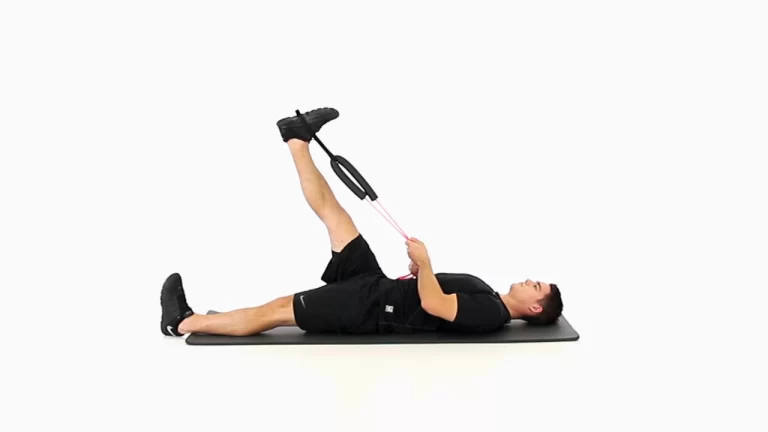
Assisted shoulder flexion: The patient faces a wall while standing with their arm out in front of them. The therapist or another external force helps lift the patient’s arm upward while standing behind them.
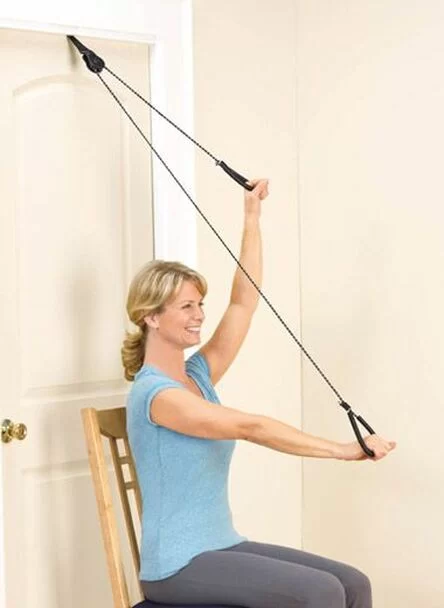
Assisted knee extensions: While seated in a chair, the patient performs assisted knee extensions with their feet flat on the ground. The therapist or some external force places their hand on the patient’s ankle to assist them in straightening their leg. The patient consciously flexes their quadriceps muscle to straighten their leg.

Assisted elbow flexion: involves the patient sitting in a chair with their arm extended in front of them. The therapist or any external force assists in bending the elbow while standing behind the patient. In order to actively bend their elbow, the patient contracts their biceps.
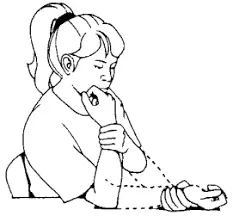
Assisted Hip Abduction: For assisted hip abduction, the patient lies on their side with their legs straight. The therapist or any external force holds the patient’s ankle to help raise the leg.
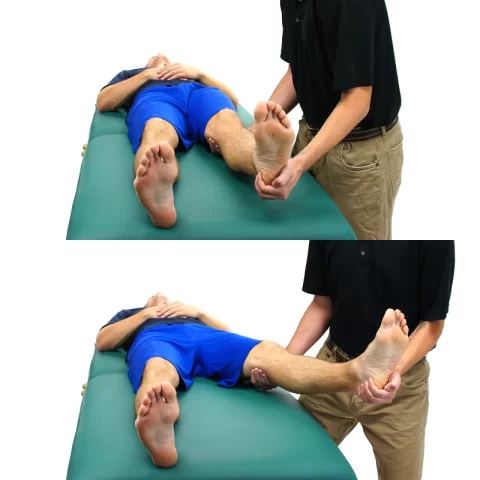
These are just a few instances of active-aided workouts. It’s important to consider each patient’s specific needs and goals while designing an exercise program. It is always advisable to consult with a competent physical therapist or other healthcare provider prior to beginning any new fitness regimen.
Summary
These exercises are commonly used to assist patients in regaining strength and mobility following an injury or surgery. It is best to consult with a participating physical therapist or other healthcare provider before starting any new exercise regimen.
FAQs:
By assistance, what do you mean?
assistance, particularly financial or material contributions made to individuals, nations, etc. after they have gone through a trying time: require or look for help The minister disclosed that the banking sector relied on taxpayer support to remain afloat.
What is the aided exercise principle?
When the muscles controlling a body lever are too weak to produce movement, active-aided workouts are utilized. in order to regain movement.
What separates activity that is resisted from exercise that is assisted?
When very weak muscles need to be strengthened in the beginning, assistive exercises are performed. Muscle atrophy cannot be stopped by passive exercises, which do not involve the contraction of muscles. Neither do they affect a muscle’s strength.
What differentiates support exercises from primary exercises?
One very crucial difference between the aid exercises and the primary lifts is that provided the previously described injuries and diversions do not occur, the primary exercises can be trained and developed for years at a time.
What differentiates assistance exercises from core exercises?
Exercises for the Core and Assistance
When choosing exercises, core exercises take precedence because they apply to a sport and can engage one or more significant muscle areas as well as two or more key joints. Only one joint and minor muscles are used in assistance exercises. They hold little significance.
Do assistance exercises have to be done?
Exercises for assistance may not be necessary for you all the time, or even frequently, but occasionally, when you’ve discovered a weakness or are attempting to train around an ailment, they may be incredibly beneficial to have in your toolkit.
What qualities does an assisted exercise have?
To give you a break from the routine, the finest aid exercises use the same movement pattern as the primary exercise but load the body in a different way or focus on slightly different sections of the motion. While some adopt a distinct stance or tempo, others employ partial ranges of motion.
What is an exercise in a self-assisted range of motion?
Self-assisted range of motion (ROM) can be performed manually, using equipment, or with reciprocal motion devices. Exercises with wands offer direction for ROM in the elbow and shoulder.
What makes aid workouts crucial?
Primary workouts are enhanced by accessory exercises. Smaller, supporting muscles as well as those that are unbalanced or weaker than others are strengthened by them. Thus, your entire strength increases. It will assist you in setting new personal records in lifting.
What are elbow range-of-motion exercises with active assistance?
Keep your arm by your side when you stand. After five to ten seconds, hold your elbow bent, and then straighten it to release the stretch. Ten times through, repeat the workout.
What advantages does active-aided exercise offer?
Exercises with active assistance are utilized to give the weak muscle just enough support to strengthen it. Preserve the muscles’ natural suppleness and contractility so that they can get stronger and undergo hypertrophy.
What is the range of motion assistance?
Active-assistive range of motion (AAROM): Your physical therapist or a machine may help you move the injured or recovering body part in order to protect it while it heals if you are recovering from surgery or an injury. Strength and flexibility in the damaged area are enhanced with AAROM.
What kind of workout would you consider assisted?
As an illustration, a person can raise one leg as high as possible in front of him while seated in a chair. The patient can stretch his leg further with the assistance of a second person, a therapist, or any other assistant than he could if he relied just on his own muscles to flex it.
Which ROM type qualifies as active assistive?
A-AROM, or aided active range of motion, is a common physical therapy technique used to increase a body part’s strength or flexibility.
Exercises that require active help are what?
exercises that a patient actively completes with help from a third party, such as a therapist, a weight and pulley circuit, a cable and pulley, etc. Use exercises using active assistance when: The governing muscles of a body lever aren’t powerful enough to move the body.
References
- Patel, D. (2023a, August 29). Active Assisted Range of Motion Exercises (A-AROM) – Samarpan. Samarpan Physiotherapy Clinic. https://samarpanphysioclinic.com/active-assisted-range-of-motion-exercises-a-arom/

